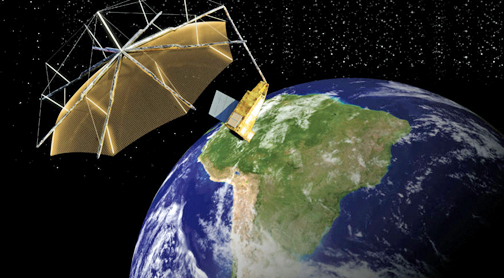
_l.jpg)
Using the P-band frequency, the 2021 scheduled launch of the Biomass satellite should enable the European Space Agency (ESA) to explore the surface of the Earth using Synthetic Aperture Radar (SAR).
Various components are required to massage such a satellite together into a unified craft, and Harris Corporation (NYSE: HRS) has been selected by Airbus Defence and Space, the builder of the Biomass satellite, to provide a 12-meter deployable reflector and precision boom assembly for this carbon-monitoring craft. (Biomass refers to the amount of living matter in a given habitat, and studying it is important in understanding the Earth’s climate.) This satellite is expected to produce the most accurate global maps ever made of forest biomass, forest height and forest disturbances (e.g., burning of tropical forests).

Airbus UK will lead a consortium to build the Biomass satellite, which will study carbon storage in global forests. This is also the first space-based use of a P-band synthetic aperture radar. Harris Corp. is building the 12-meter-diameter deployable antenna.
Photo credit: Airbus.
The Harris deployable reflector is a major component of the SAR antenna and enables the Biomass satellite to obtain a high level of map accuracy not attainable by ground measurement techniques alone. With more than 80 reflectors in orbit, Harris is the leading supplier of large reflector apertures and deployable mesh reflector-feed antenna systems.
Harris antenna reflectors have the highest surface accuracy design in the industry enabling high frequency communication applications. Offerings span from UHF band to V-band (over 50 GHz) in sizes ranging from five meters to the world's largest commercially available 22 meter reflector.

